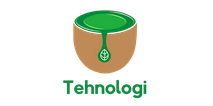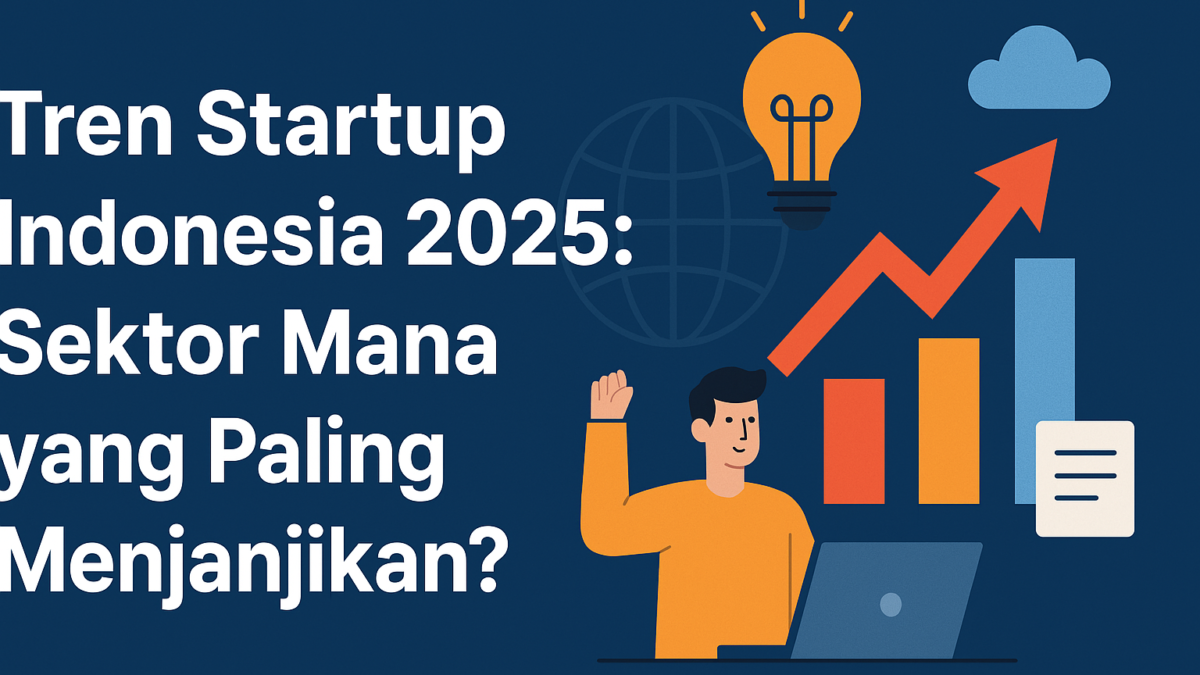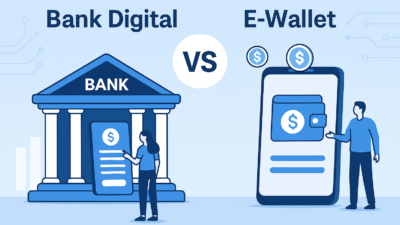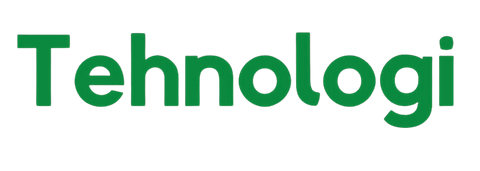
Introduction: Loyalty Isn’t What It Used to Be (And That’s Okay)
Let’s be real—customer loyalty in 2025 is like dating in the age of apps. Everyone has options. Swipe left, swipe right, try something new. But when someone finds the one, they stick around. And that’s your goal: to become the brand your customers don’t just tolerate—they rave about.
But loyalty doesn’t just happen because you have a rewards program or a catchy jingle. Nope. It’s about connection, trust, and delivering so much value that people don’t even want to look elsewhere. So, how do you do it? Glad you asked. Let’s dive into five foolproof ways to make your customers love you, stay with you, and maybe even tell their friends about you. Ready? Let’s go!
1. Stop Selling—Start Solving Problems
Let’s get one thing straight: nobody enjoys being sold to. Think about it—when was the last time you got excited because someone pushed a hard sell on you? Probably never. People don’t want to feel like targets in some commission-driven game. They want help, solutions, and a little peace of mind. And that’s where you come in.
Here’s the shift: instead of approaching sales as a way to offload a product, think of it as a way to genuinely help someone. It’s not about pushing your agenda; it’s about solving their problem. This small but powerful mindset change can make all the difference.
What does this look like in action? Imagine you’re selling software for small businesses. Instead of rattling off every feature under the sun, start by asking your customer about their challenges. Maybe they’re drowning in paperwork or struggling to keep up with inventory. Listen carefully, then show them how your software solves those specific problems. Tailor your pitch to what matters to them, not to you.
It’s like being a doctor. You wouldn’t prescribe medication before diagnosing the issue, right? You ask questions, figure out what’s wrong, and then offer the right treatment. The same applies here—diagnose before you pitch.
Real-world example: Let’s say you’re at a local coffee shop, and the barista notices you’re undecided. Instead of pushing the latest seasonal latte, they ask, “Are you looking for something strong to wake you up or something cozy for a relaxing afternoon?” They’re not selling; they’re solving your tiny but important dilemma. That’s how they turn a customer into a loyal regular.
This approach not only feels better for your customer, but it also builds trust. When people feel like you’re genuinely trying to help them—not just sell them something—they’re far more likely to stick around. They’ll think of your brand as a partner, not a pushy salesperson.
Here’s the kicker: when you focus on solving problems instead of selling products, you often sell more. Why? Because people love buying from brands that “get them.” They want to feel understood, valued, and taken care of. And when you meet those needs, loyalty follows.
- Pro tip: The brands that make life easier are the ones people come back to. You’re not just selling a product; you’re solving a pain point.
2. Personalization = Love at Scale
Let’s be honest: nothing feels worse than being treated like just another face in the crowd. In a world where automation and algorithms dominate, personalization has become the secret sauce for building loyalty. Customers want to feel like you see them, know them, and, dare we say, understand them. It’s the difference between a “Dear Valued Customer” email and one that says, “Hey Sarah, here’s a 20% discount on the sneakers you were checking out last week.”
In 2025, personalization isn’t just a nice-to-have; it’s a business essential. It’s about making every customer interaction feel bespoke—even when you’re working at scale. And thanks to technology, it’s never been easier to deliver this kind of experience.
So, how do you nail personalization without it feeling forced? Start small. Use the data you already have (and gather it responsibly, because no one likes creepy overreach). For example, if someone’s been browsing your website for office chairs, why send them an ad for outdoor grills? Show them options for the ergonomic chair they’ve been eyeing or suggest something better based on their preferences.
But personalization isn’t just about product recommendations. It’s about creating experiences that feel tailored to each individual. Think about Netflix. They don’t just throw a bunch of movies at you and hope for the best. They use your viewing history to recommend shows that align with your tastes. And when those suggestions hit the mark? You stick around—and maybe even binge-watch. That’s personalization at scale.
Real-life win: One of the most-loved examples of personalization is Spotify Wrapped. Every year, Spotify doesn’t just show users their favorite songs—they create a shareable, data-driven celebration of their listening habits. It’s so wildly popular that customers eagerly wait for it, post about it on social media, and inadvertently give Spotify free advertising. The lesson? Personalization works best when it makes your customers feel special, understood, and celebrated.
Beyond tech, don’t forget the human touch. Personalization can also come from things like handwritten thank-you notes, tailored customer service responses, or birthday shoutouts. Remember, the goal is to make your customers feel like you genuinely care—not like they’re just another email address in your CRM system.
Why this works: Personalization taps into one of the most basic human needs: the desire to be recognized. When customers feel seen and valued, they’re more likely to trust your brand, return for repeat business, and recommend you to others. It’s not just about making sales; it’s about building relationships.
In 2025, treating customers like individuals isn’t optional—it’s the foundation of loyalty. Whether you’re using AI to curate experiences or simply remembering someone’s name, those small, personal touches can have a big impact. Because at the end of the day, customers don’t just buy products—they buy experiences that make them feel good. And when you deliver that? They’ll stick with you for the long haul.
3. Give Your Customers Something to Talk About
Here’s a secret: people don’t just want great products—they want great stories. When your brand gives them something memorable, they’ll stick with you—and tell their friends. Most of us love a good story. Whether it’s a hilarious mishap, a heartwarming surprise, or a jaw-dropping moment, stories stick with us. And in the world of customer loyalty, your goal isn’t just to create satisfied customers—it’s to create memorable experiences that make them want to talk about you. Because here’s the truth: word-of-mouth is still one of the most powerful marketing tools on the planet.
But how do you get customers to talk about your brand without begging for reviews or running another tired referral program? Simple: give them something worth talking about. It’s not just about selling great products; it’s about creating moments that make them go, “Wow, that was awesome.” And in 2025, where attention spans are short and options are endless, these moments matter more than ever.
1. Surprise and Delight: Make Them Feel Special
Remember the last time you got an unexpected gift? Maybe a free dessert at a restaurant or a small discount you didn’t see coming? That feeling—the one that makes you smile and think, Hey, that was really nice—is what you’re aiming for with your customers.
- What this looks like: Small, thoughtful gestures that surprise your customers. These could be:
- Free upgrades (“We bumped your shipping to express—on us!”)
- Unexpected gifts (“Thanks for being a loyal customer—here’s a little something extra in your next order.”)
- Personal notes (“We noticed it’s been a year since your first order—thanks for sticking with us!”)
- Why it works: People love feeling appreciated, especially when it’s genuine and unexpected. A little effort goes a long way in making someone’s day—and giving them a story to share.
Real-world example: Southwest Airlines is known for surprising passengers with free drink coupons or even spontaneous onboard celebrations. These small acts make their customers feel valued and keep the airline at the top of the list for loyalty.
2. Stand for Something Bigger Than Your Product
Today’s customers aren’t just looking for great deals—they’re looking for brands with purpose. They want to align themselves with companies that share their values, whether it’s sustainability, inclusivity, or community impact. If your brand stands for something meaningful, you’re not just selling a product—you’re inviting customers to join a movement.
- How to do it:
- Highlight your mission and values in your marketing and interactions.
- Show tangible impact, like donations made, resources saved, or lives changed.
- Invite customers to participate. For example, ask them to contribute to a cause through their purchase, like TOMS’ “buy one, give one” model.
Real-world example: Patagonia doesn’t just sell outdoor gear—they’re a beacon of environmental activism. When they ran their “Don’t Buy This Jacket” campaign, they urged people to repair or reuse their products instead of buying new ones. It wasn’t just bold—it was authentic. And guess what? Customers didn’t stop buying—they became even more loyal.
3. Make Your Brand Experiences Fun and Shareable
Let’s talk about shareability. People love sharing fun, quirky, or inspiring experiences with their friends. Whether it’s snapping a photo of a beautifully packaged product or posting about an amazing in-store experience, these moments turn customers into your unpaid ambassadors.
- What this looks like:
- Clever packaging that’s “Instagram-worthy.” (Think creative designs, handwritten thank-you notes, or fun surprises inside the box.)
- Interactive events, both online and offline, that make people feel connected to your brand. Virtual scavenger hunts, pop-up shops, or live streams with giveaways can all create buzz.
- Unique customer interactions. A coffee shop writing a joke on your cup, or a hotel folding towels into fun shapes, leaves a lasting impression.
Real-world example: Remember when Coca-Cola launched its “Share a Coke” campaign with personalized bottles? It was a simple idea—printing people’s names on Coke labels—but it went viral. Everyone wanted to find “their” Coke, and millions of people shared photos of their bottles online.
4. Turn Your Customers into Your Brand’s Heroes
Want to know a secret? Your customers want to be part of your story, not just an audience to it. Give them the spotlight, and they’ll reward you with loyalty—and free publicity.
- How to do it:
- Showcase user-generated content (UGC). Ask your customers to share how they use your product or service, then feature their posts on your social channels.
- Create contests or challenges that encourage creativity. For example, a fitness brand might ask customers to share their transformation stories.
- Celebrate your customers’ milestones. Did someone order from you 10 times? Shout them out. Did they post an amazing photo featuring your product? Make them a star.
Real-world example: Glossier has built an entire community around user-generated content. Their customers share photos, reviews, and tutorials featuring Glossier products, which the brand amplifies on social media. This creates a sense of belonging and pride among customers, who feel like they’re part of something bigger.
5. Build Buzz with Bold, Memorable Campaigns
Sometimes, the best way to get people talking is to take a risk. Bold campaigns and out-of-the-box ideas can grab attention and spark conversations—just make sure they align with your brand and values.
- How to do it:
- Experiment with creative marketing stunts. (Think flash mobs, viral videos, or clever guerrilla marketing tactics.)
- Collaborate with unexpected partners. A luxury brand teaming up with a fast-food chain? It’s weird, but it works.
- Be relevant and timely. Piggyback on current events or cultural moments in a way that feels organic.
Real-world example: Burger King’s “Whopper Detour” campaign gave customers a 1-cent Whopper if they ordered it through the app while standing near a McDonald’s. It was clever, cheeky, and got everyone talking.
Why This Matters: Stories Build Loyalty
Here’s the bottom line: people don’t just remember great products—they remember great experiences. When you give your customers something to talk about, you’re not just earning their loyalty—you’re turning them into your brand’s advocates. They’ll share their stories with friends, post about you on social media, and come back for more.
So, go ahead—create moments that make your customers smile, laugh, or even gasp a little. Because when you give them something to talk about, you’re giving them a reason to stay. And that’s how loyalty is built in 2025.
4. Be Human. Really Human.
what if we all just acted like humans? It sounds simple, doesn’t it? But somewhere along the way, some brands forgot this fundamental principle. Instead of speaking to customers like real people, they started talking like robots with a thesaurus. “Dear esteemed customer, we are reaching out to inform you that your inquiry is being processed in a timely manner.” Yikes. That’s the kind of language that makes customers roll their eyes and hit delete faster than you can say “unsubscribe.”
In 2025, authenticity isn’t optional—it’s the secret sauce for loyalty. Customers can sniff out fake sincerity faster than a dog can find bacon. They don’t want pre-scripted apologies or canned compliments. They want brands that show up, own up, and communicate like actual humans. It’s about being real, relatable, and, most importantly, empathetic. So how do you do that? Let’s break it down.
1. Speak the Language of Your Customers
Let’s start with the basics: how you talk to your customers matters. Whether it’s through emails, on social media, or in live chats, your tone should feel warm, approachable, and human. Drop the jargon. Forget the corporate buzzwords. Instead, aim for clarity and connection.
- What this looks like:
- Instead of: “Your issue has been escalated to the appropriate department for resolution.”
Say: “We’re on it! Our team is already looking into this and will update you soon.” - Instead of: “Thank you for your patience during this time of unforeseen circumstances.”
Say: “Thanks for hanging in there with us—we’re working hard to make things right.”
- Instead of: “Your issue has been escalated to the appropriate department for resolution.”
Pro tip: Imagine you’re talking to a friend, not a customer. It’s amazing how much more natural (and effective) your communication becomes when you ditch the formalities.
2. Admit Mistakes and Fix Them Fast
Here’s a little secret: customers don’t expect you to be perfect. But they do expect you to own up when you mess up. Trying to sweep mistakes under the rug or deflect blame only makes things worse. Being human means admitting when you’ve dropped the ball—and then doing whatever it takes to make it right.
- What this looks like:
- Acknowledge the mistake: “We’re really sorry—we messed up.”
- Take responsibility: “This was 100% on us, and we’re already working on a fix.”
- Offer a solution: “Here’s what we’re doing to make this right for you.”
Why it works: When you’re transparent and proactive, you build trust. And trust, as we all know, is the foundation of loyalty.
Example: When an airline accidentally overbooked a flight and had to bump a passenger, they offered an immediate apology, a refund, and a voucher for future travel. The result? The customer not only accepted the apology but also praised the airline’s quick response on social media. A mistake turned into a PR win—all because the brand acted human.
3. Show Empathy in Every Interaction
Empathy is the cornerstone of being human. It’s about putting yourself in your customer’s shoes and seeing the world from their perspective. Maybe they’re frustrated because their order didn’t arrive on time. Or maybe they’re anxious because they’re unfamiliar with your product. Whatever the case, a little empathy goes a long way in making customers feel understood and valued.
- What this looks like:
- Listen actively: Don’t interrupt or assume—you might be surprised at what your customers really need.
- Validate their feelings: “I can totally understand why this would be frustrating for you.”
- Offer reassurance: “We’re here to help, and we’ll get this sorted out for you.”
Pro tip: Empathy doesn’t mean bending over backward for unreasonable demands. It simply means treating your customers like people with real feelings and concerns.
4. Add a Personal Touch
Automation is great, but don’t let it strip away the human touch. In an era where chatbots and auto-replies are the norm, going the extra mile to make interactions personal can set your brand apart.
- Ideas for adding a human touch:
- Use your team’s names in emails or chats so customers know they’re talking to a real person.
- Send handwritten thank-you notes or personalized follow-ups after big purchases.
- Celebrate milestones with your customers, like anniversaries or birthdays, with a personal message or small token of appreciation.
Example: A boutique clothing store sent a thank-you card and a small gift to a customer who made a large purchase. The card included a handwritten note mentioning the specific items they bought and how the staff loved helping them pick it out. That customer? They’re now a lifelong fan.
5. Be Fun and Relatable
Being human doesn’t mean you have to be boring. Don’t be afraid to show some personality! Humor, wit, and relatability can go a long way in building a connection with your customers.
- What this looks like:
- A playful out-of-office email: “Hey there! I’m currently out adventuring, but I’ll be back on Monday. If it’s urgent, please reach out to [colleague’s name]. If not, don’t worry—I’ll get back to you faster than you can say ‘vacation envy.’”
- A witty product description: “This hoodie is so cozy, it might just convince you to cancel all your plans and binge-watch your favorite series instead.”
- A lighthearted approach to customer service: “You’re right—this shouldn’t have happened. Our bad! Let’s fix it ASAP and make sure it doesn’t happen again.”
Why it works: People like doing business with brands that feel approachable and friendly. When you make your customers smile or laugh, you’re creating a positive emotional connection—and that’s gold for loyalty.
6. Be Real, Not Perfect
Perfection is overrated. Customers don’t expect you to have all the answers or get everything right 100% of the time. What they do expect is honesty, humility, and a willingness to learn.
- What this looks like:
- Sharing behind-the-scenes moments: “Here’s a sneak peek at what we’re working on—it’s not ready yet, but we’re so excited to share it soon!”
- Showing vulnerability: “We’re a small team figuring things out as we go, and we couldn’t do it without your support.”
- Highlighting your team’s humanity: “Meet Sarah, the designer behind our latest collection. She loves hiking, baking, and making your orders look amazing!”
Why this works: Being real makes your brand relatable. It reminds your customers that there are actual people behind the logo—people who care about what they do and the customers they serve.
Why Being Human Builds Loyalty
At the end of the day, being human is about building relationships, not transactions. It’s about showing your customers that they’re more than just numbers to you—they’re valued, respected, and appreciated. And when you get this right, something magical happens: your customers become more than buyers. They become advocates, ambassadors, and fans who stick with you through thick and thin.
So, ditch the corporate jargon, embrace empathy, and treat your customers like you’d want to be treated. Because in 2025, the brands that win aren’t the ones that act perfect—they’re the ones that act human. And that’s a connection no algorithm can replace.
5. Keep Evolving—Don’t Let Them Get Bored
Loyalty isn’t a “set it and forget it” kind of deal. It’s not enough to win your customers over once and expect them to stick around forever. In a world where trends change faster than TikTok challenges, staying relevant is the key to keeping your customers engaged. If you don’t evolve, your customers won’t just get bored—they’ll move on to the next shiny thing.
In 2025, where competition is fiercer than ever, customer loyalty depends on one simple rule: always keep things fresh. Whether it’s innovating your products, spicing up your marketing, or rethinking how you deliver value, constant evolution shows your customers that you’re not just resting on your laurels. You’re actively working to keep them excited, engaged, and eager to see what you’ll do next.
1. Innovate Like It’s Your Job (Because It Is)
One of the fastest ways to lose a customer’s interest is to let your product or service stagnate. If they’ve been using the same features for years while your competitors are rolling out exciting updates, don’t be surprised if they start to stray.
- What innovation looks like:
- Product updates: Add new features that solve emerging customer problems. Stay ahead of the curve by anticipating what they’ll need next.
- Service upgrades: Offer faster delivery, better customer support, or more flexible options.
- Fresh experiences: Introduce creative ways for customers to engage with your brand, like virtual reality try-ons or interactive tutorials.
Example: Think about Apple. They don’t just release the same iPhone year after year. Every iteration has something new—better cameras, faster processors, cooler designs. Even if the updates are incremental, they keep people excited and loyal because customers feel like they’re part of something cutting-edge.
2. Stay on Top of Trends (But Don’t Chase Every Fad)
Your customers live in a constantly changing world, and your brand needs to keep up. But there’s a difference between being trendy and being gimmicky. The key is to focus on trends that align with your brand’s values and truly add value for your customers.
- How to stay on trend without losing your identity:
- Keep an eye on industry shifts and emerging customer needs.
- Adopt trends that make sense for your audience. For example, if sustainability is important to your customers, consider eco-friendly packaging or carbon-neutral shipping.
- Avoid jumping on every bandwagon. Not every trend will resonate with your audience, and forced attempts to stay “cool” can backfire.
Example: Starbucks is a master of trend adoption. From pumpkin spice lattes (hello, fall vibes!) to plant-based milk options, they’ve consistently introduced offerings that align with changing customer preferences without straying from their brand identity.
3. Listen to Your Customers (Like, Really Listen)
Your customers are your best source of inspiration. They’re already telling you what they want—you just need to pay attention. Whether it’s through reviews, surveys, or direct feedback, listening to your customers can help you evolve in ways that truly matter to them.
- Ways to gather feedback:
- Run regular surveys to ask customers what they’d like to see next.
- Monitor social media and customer reviews for recurring themes.
- Create a feedback loop where customers feel heard—and see their ideas come to life.
Pro tip: When you implement a customer suggestion, shout it from the rooftops! A simple message like, “You asked, we listened!” can go a long way in building loyalty and making customers feel valued.
4. Refresh Your Branding and Messaging
Sometimes, it’s not your product that’s gone stale—it’s the way you’re presenting it. Keeping your branding fresh and your messaging relevant ensures you stay top-of-mind for your customers, even as their tastes and preferences evolve.
- How to do it:
- Update your website, packaging, or social media visuals to reflect modern aesthetics.
- Experiment with new messaging that resonates with current cultural or generational shifts.
- Launch a campaign to reintroduce yourself to customers who may have drifted away.
Example: Remember Old Spice? They completely revitalized their brand with a quirky, humorous rebranding campaign that introduced “The Man Your Man Could Smell Like.” The result? A once-outdated brand became a favorite among younger audiences.
5. Gamify Engagement to Keep Things Fun
Let’s be honest: people love a little competition and reward. Gamification—adding game-like elements to your customer experience—can be a powerful way to keep your audience engaged and coming back for more.
- Ideas for gamification:
- Create a rewards program with levels or badges. For example, a coffee shop could offer a “Gold Member” tier for customers who buy 20 drinks in a month.
- Introduce challenges or goals. A fitness brand could offer prizes for customers who complete a certain number of workouts.
- Add playful elements to your shopping experience. Think spin-the-wheel discounts or scavenger hunts for secret deals.
Example: Duolingo has nailed gamification with streaks, achievements, and leaderboards. It keeps users motivated to come back every day—not because they have to, but because it’s fun.
6. Don’t Just Keep Up—Stay Ahead
True evolution means not just responding to changes, but anticipating them. The most successful brands aren’t just reactive; they’re proactive. They’re the ones setting trends, not following them.
- How to stay ahead:
- Invest in research and development to explore new possibilities.
- Stay informed about industry innovations and think about how they can apply to your business.
- Take calculated risks. Sometimes, the best way to evolve is to take a bold leap.
Example: Tesla didn’t wait for customers to demand electric cars—they created a market for them. By staying ahead of the curve, they didn’t just evolve their brand; they disrupted an entire industry.
7. Why Evolution Builds Loyalty
Here’s the thing about evolution: it keeps your customers curious and excited. When you’re always introducing something new—whether it’s a feature, a trend, or a campaign—you give your customers a reason to stay engaged. It’s like a favorite TV show that keeps delivering season after season. Sure, they could watch something else, but why would they, when you’re still keeping things fresh and fun?
In 2025, where customer expectations are sky-high and attention spans are razor-thin, staying stagnant isn’t just boring—it’s risky. But when you commit to constant evolution, you’re not just keeping up with the times—you’re creating loyal fans who can’t wait to see what you’ll do next.
So, don’t let your brand gather dust. Innovate. Refresh. Listen. And most importantly, keep your customers on their toes. Because loyalty isn’t about standing still—it’s about moving forward together. And when you do that? Your customers will be right there with you for the ride.
Conclusion: The Loyalty Love Story
Loyalty isn’t a one-time deal—it’s a relationship. It’s about showing your customers that you’re in it for the long haul, not just the quick buck. Solve their problems, make them feel seen, and always, always keep it real.
In 2025, the brands that win are the ones that know how to make their customers feel like family (without the awkward holiday drama). So start small, take action, and watch the loyalty roll in. Who knows? You might just become their one true love.















